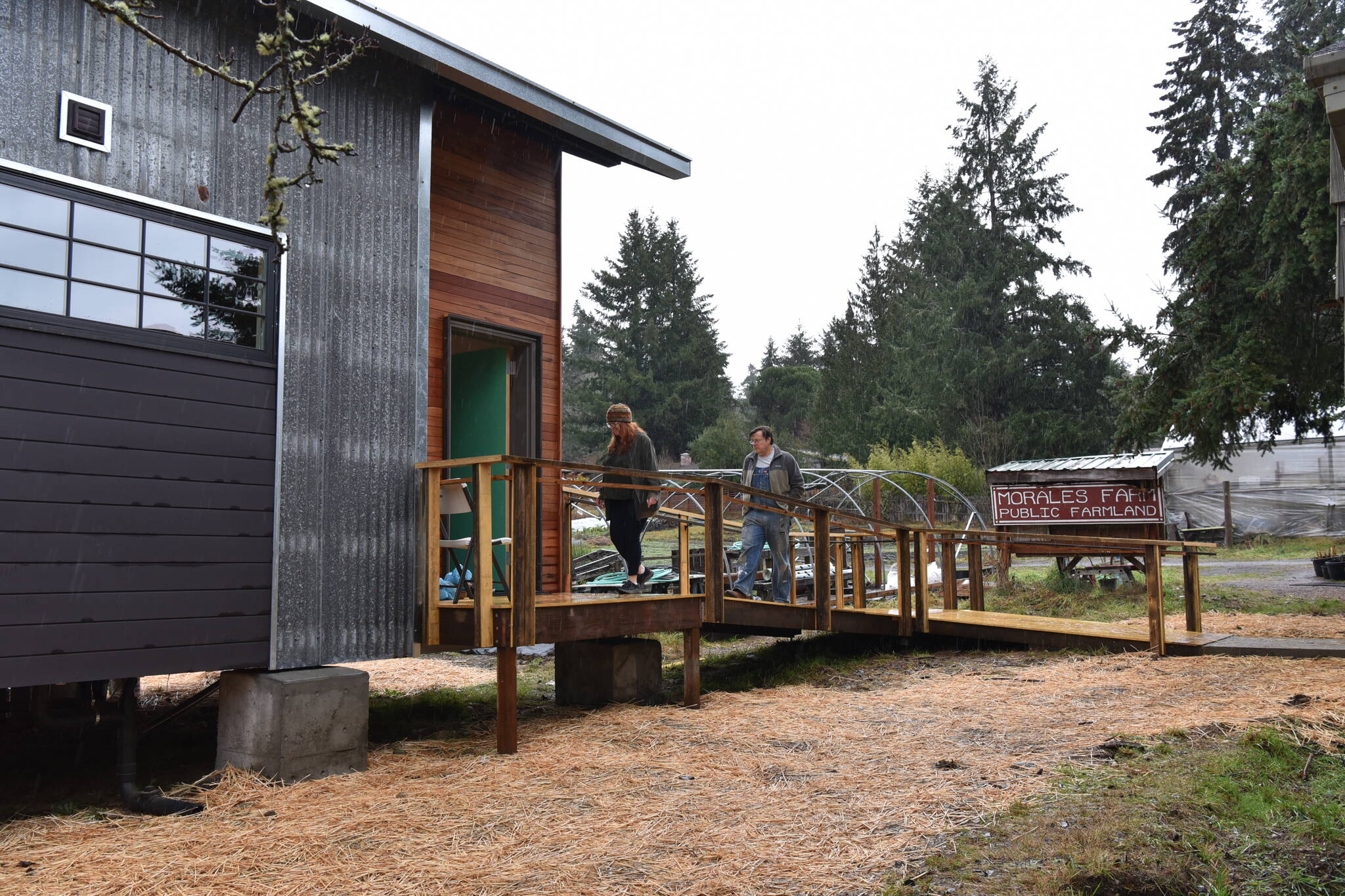If there’s one thing that Bainbridge Islanders know how to do, it’s solving problems by reusing materials.
The ethos of reduce, reuse and recycle proved to be the catalyst that helped make architect Matthew Coates’ dream of diverting unwanted building materials from the landfill to build three tiny houses for farming interns on the Morales farm near Lovgreen Road and Highway 305.
Coates said the tiny houses are technically “satellite bedrooms,” but the 350-square-feet dwellings will be new homes for interns who live, train and work on the farm.
For 10 years, Coates said he had the idea and finally, “fortune and good blessings brought me together with all these partners…and we accomplished something that I believe has never been done in our country, which is to build these tiny homes essentially from completely unwanted material.”
All the materials used, the nails, screws, caulk, weather stripping, windows, brackets, the roof, were unwanted and headed for the landfill, said Coates. “We were able to capture it all, reorganize it, and create a home out of it for people to be able to use it. It took a lot of faith, goodwill and a lot of work. The amount of material that we throw away is large and we can do things differently, this is a prime example of how to do that and a value of our community.”
Some of the materials came from the partial demolition of the old Harrison Medical Center on Madison Avenue, which is being remodeled into a police-court facility.
As the project grew, thousands of labor hours from volunteers and construction employees were donated, and little conversations about gathering materials even connected people from off island. When Benjamin Moore Paint in Seattle heard that the project needed paint, the next day they showed up with the paint and a team who volunteered to work.
Kellen Bond, Clark Construction vice president of operations, said that 26,000 pounds of building materials valued at about $125,000 were diverted from the landfill. Everything from fixtures to windows was sourced from trade partners, subcontractors and the community.
“One fun thing about this project is the original design had a certain height loft, and because of the materials that we sourced, we were able to expand that by another three and a half feet because of just the sizing of the material which allowed for more space,” Bond said.
Construction volunteer Deb Rudnick marveled at the structures and remembered the hours she spent pulling nails from a “mountain of lumber” for the project. “I think it’s phenomenal; this is a template that could be replicated in so many places.”
The team had to do a lot of problems solving and networking to find materials. Clark Construction was trying to get three-tab roofing donated but couldn’t because of the high demand after a hurricane in Florida.
Ultimately, it was during a tennis match that a friend revealed he was trying to get rid of some standing seam roofing material, and two days later the team was measuring the roofing supplies used on the second tiny house.
By using repurposed materials, builders were able to prove that it is possible to make affordable housing for the workforce who drive onto BI every day because they are priced out.
Coates spoke at an Open House and explained that the first tiny house was built entirely with reused materials, including the furnishings provided through the Buy Nothing Project and two local designers.
“Everything was donated, leftover, unwanted. The other two were 90 percent. But we focused on this, particular unit to be 100 percent; every nail, every joist hanger, all the insulation,” Coates said, adding he’s proud of the way the community embraced his pro bono project.
“It’s meant the world to me to be in a community where we believe this is something important for our community and that it’s not just about, being sustainable and reusing materials or saving things from the landfill, but it’s also showing how we value affordable housing and that is going to be helping farming interns live on the property and learn how to make a living farming,” Coates said.
“This is one of the most heartwarming things I’ve experienced in my life,” he added…”Everyone had their hearts in the right place. It really teaches that there is so much joy in giving, and there’s so much joy in seeing what we can do when we put our minds together.”
Coates wants this project to be replicated around the country and will open source all of the tools, information and lessons learned. “Go to every architect you know, and tell them to do this exact same thing because we have shown that there’s a different way to build.”
Tina Gilbert, board member of Housing Resources Bainbridge, which focuses on providing affordable housing on BI, said, “If somebody wanted one of these tiny houses on their property, we could facilitate that.”



